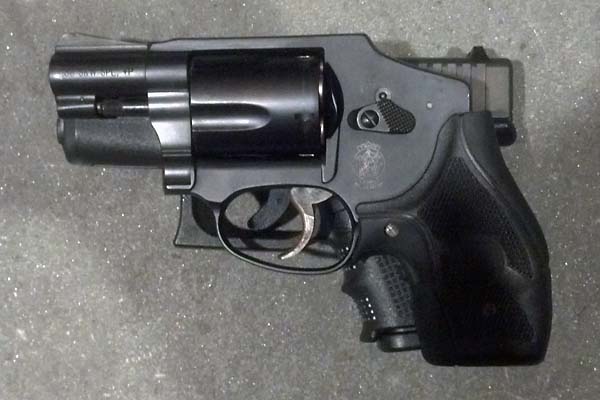The persistent popularity of small snubnosed revolvers, typified by the J-Frame models of Smith & Wesson, for concealed carry purposes astonishes me. Back in the day, sure. Small, reliable, semiautomatic pistols in a reasonable defensive caliber did not exist. But this is Anno Domini 2018. It is not 1958. There are plenty of options if you want something really small and concealable and reliable and chambered in a reasonable defensive caliber. Off the top of my head, there’s the S&W M&P Shield, the Glock 43, and the Walther PPS, all with established track records and manufacturers with good QC. These are reliable choices. They’ve been on the market for years. They work. Really. And they provide so many advantages over the small revolver that I still am astonished that people go for the revolvers instead. And no, I also don’t know why my tactical friends keep seeking out training on the damn things. Let’s review the many ways that the small, single-stack semiautomatic is flat-out better than the old-school revolver competition.
- Sights
I tend to get picky about my sights. Modern semiautomatic pistols allow me to be picky. There are a wide variety of sights available for your Glock 19, letting you pick exactly the ones that work with your eyesight. Single-stack subcompacts like the PPS, Shield, and Glock 43 are no different. They all have sight dovetails. This highly advanced technology allows you to change out the sights to something that better suits your needs and eyes. It’s amazing. And these small pistols from established manufacturers have a large aftermarket. You need dovetails, but you also need sights to put in them. But we have you covered with the choices above, whether you like 3-dots or tritium or fiber optics.The vast majority of J-frames have atrocious “sights” that consist of a little lump of metal on the front of the barrel and a little trough cut in the rear of the frame. Not adjustable, not high-visibility, not tritium, and certainly not interchangeable. Simply put, the stock sights are awful and you are stuck with them. There are a few J-Frame models that actually have dovetails, but they are tremendously expensive and there are few manufacturers working with this market niche. Otherwise, better hope your chosen rounds shoot someplace sensible based on a reasonable sight picture.
Trigger
I’ve gotten less picky about my trigger choice these days, though I still like good ones. Anyway, I can think of few things worse in a trigger than the average double action pull of a recently-made revolver. Long and heavy, and probably gritty too. Lots of people will advocate an Apex spring kit in your J-frame. Which helps. Or you could get one of those single-stack subcompacts that has better trigger out of the box. And these single stacks can also take trigger improvements, just like their bigger brethren. I’m sure if I grew up firing revolvers and figuring out how to make that trigger work well, a slightly-lightened wheelgun trigger would be the “bees knees”. But I didn’t, so it’s not. Comparing stock to stock or modified to modified, the semiautos will have the better triggers, and you’ll likely be more familiar with them, because most of your shooting is going to be with some full size semiautomatic pistol.That Wheel
You get five shots in a j-frame. Six in some competitors. At which point you’re working with speed strips, probably. Maybe speedloaders, but those are bulky. This is a different and slower reload drill than the modern semiautomatic, which you probably spend most of your time shooting. And even the small single-stack pistols mentioned previously all hold more bullets. Also note that the J-Frame’s footprint matches that of the double-stack Glock 26, which holds twice as many bullets and can accept magazines from other, larger Glock pistols.
Just about everybody is going to be better suited to buying a small semiautomatic these days. And you’re not giving anything up on size either. Here’s an overlay from the late Todd Green, who is also firmly in the more bullets camp, where we can see that a J-frame and a Glock 26 are both about the same size.

Oh, and one more thing. J-frames with the locking hole in the side of the frame above the cylinder release have been known to have this lock break, jamming up the gun. Just what you want.